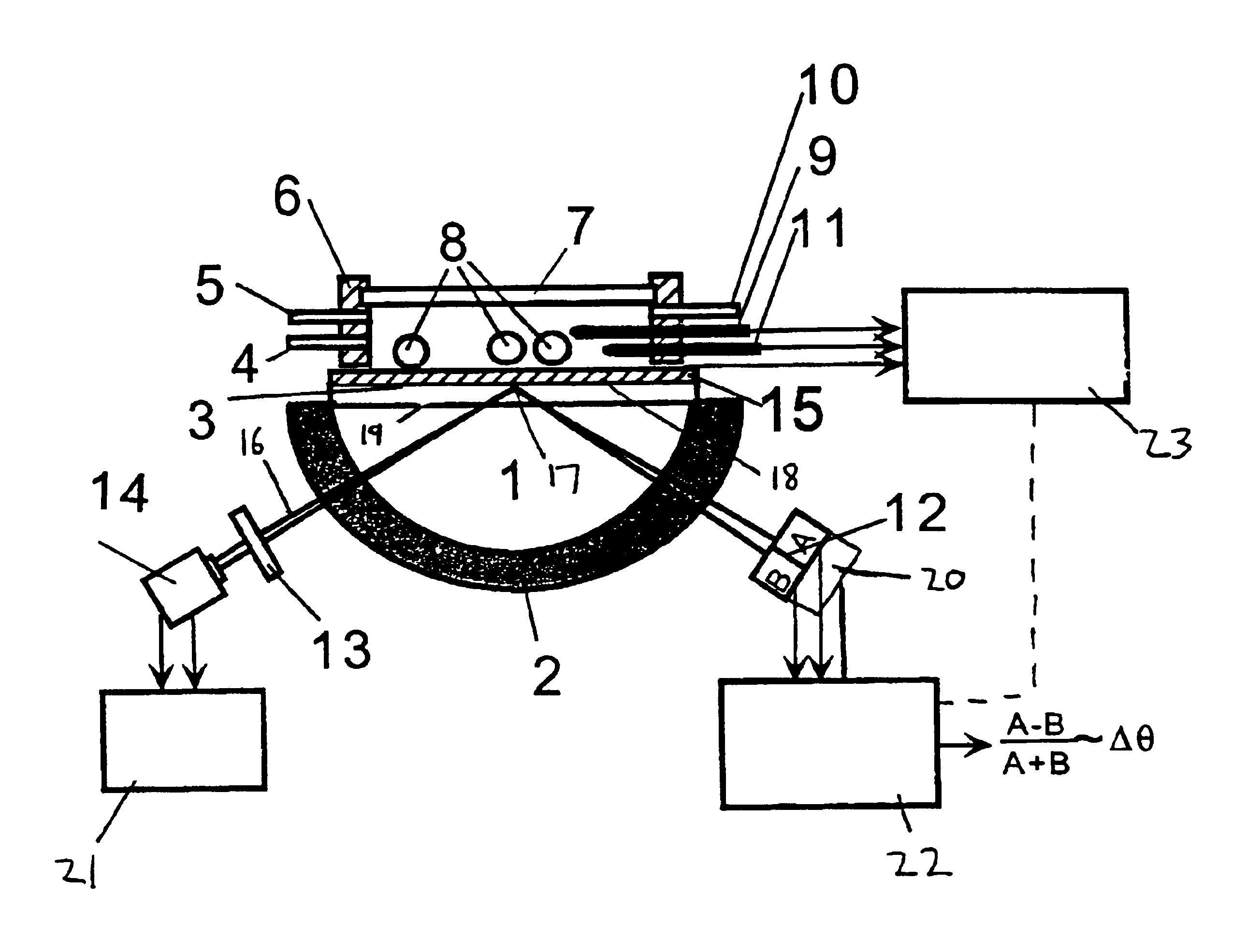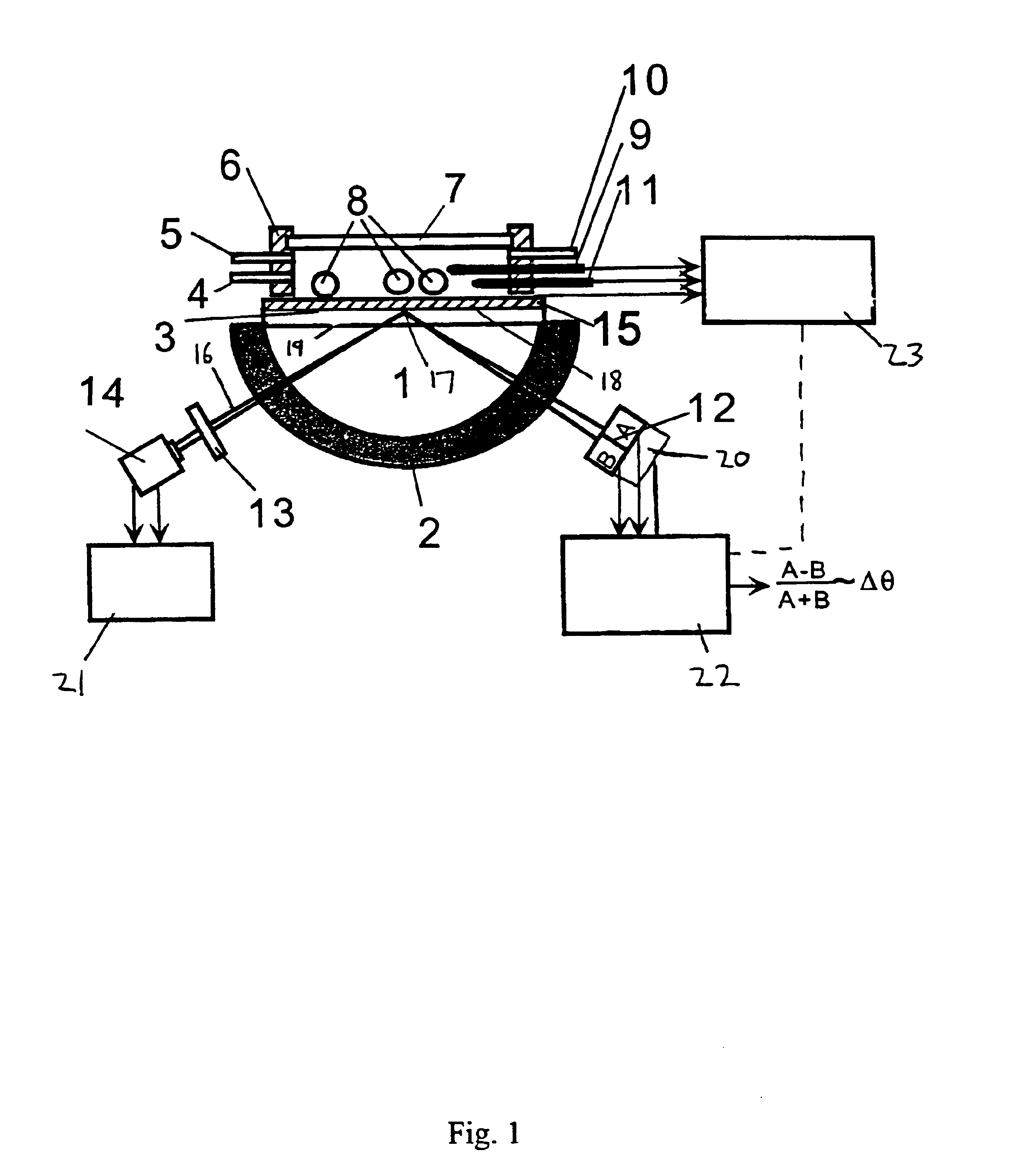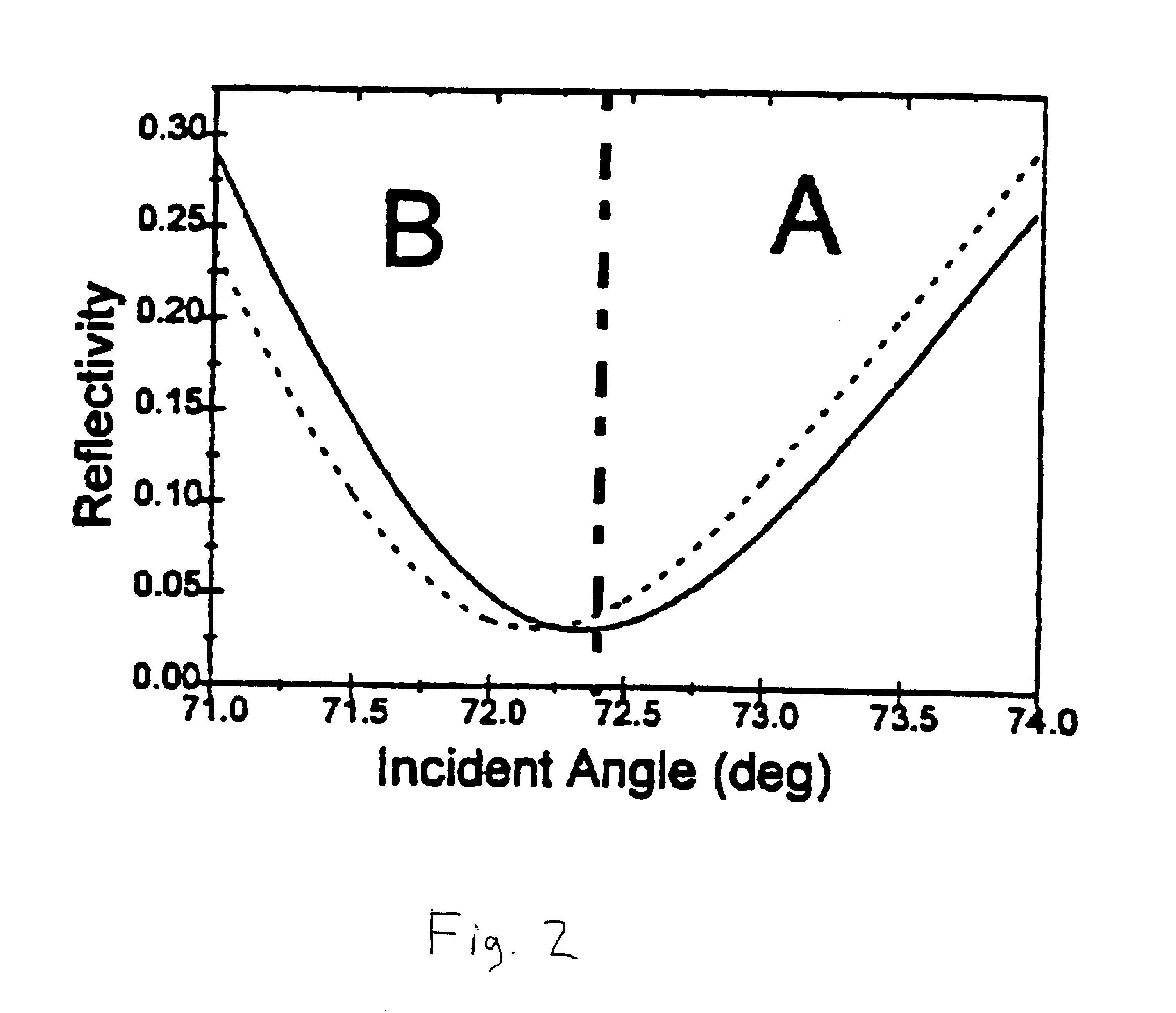Surface plasmon resonance detection with high angular resolution and fast response time
a surface plasmon and detection technology, applied in the field of surface plasmon resonance detection with high angular resolution and fast response time, can solve the problems of increasing the sensitivity of the resonance angle measurement relationship between the intensity and the sensitivity of the resonance angle measurement, and the bulky setup is more susceptible to mechanical noise and thermal dri
- Summary
- Abstract
- Description
- Claims
- Application Information
AI Technical Summary
Problems solved by technology
Method used
Image
Examples
example 2
SPR Setup 2
An alternate SPR setup used a BK7 plano-cylindrical lens (Melles Griot) as a prism. On the prism, a BK7 glass slide, coated with a 45 nm thick silver or gold film by a sputtering coater, was placed with an index matching fluid. White light from a 150 W xenon lamp (Oriel) was sent to a monochromator. Monochromatic light with a bandwidth of ca. 0.5 nm from the monochromator was collimated and then focused by a 14 mm focal-length lens through the prism onto the silver film. Light reflected from the silver film was detected with a bi-cell photodiode detector (Hamamatsu Corp., model S2721-02), which was mounted on a precision translation stage. In each measurement the prism was rotated such that a dark line, corresponding to the SPR dip, was located at the center of the laser bean. The reflected light falling onto the two cells of the photodetector was then balanced by adjusting the photodetector position with the translation stage until the differential signal approached zero...
example 3
Effects of Electron Density on SPR
FIG. 6 shows the SPR dip position of a gold film (electrode) coated with an organic monolayer (mercaptopropionic acid or MPA) in 50 mM phosphate buffer as the electrode potential was varied linearly from -0.2 V to 0.3 V (v.s. Ag / AgCl). The dip position shifts about 0.0008 degrees per 100 mV which is too small to be easily detected with a conventional SPR setup. It has been recognized that electrode potential can change the SPR dip position via changing the electron density in the metal film. The shift observed here is much smaller than that for a bare gold electrode because the presence of MPA decreases the surface capacitance therefore the electron density change for a given potential change.
example 4
Protein Adsorption Onto Self-assembled Monolayers
FIG. 7 shows the adsorption process of cytochrome protein onto 3mercaptopropionic acid-coated gold electrode monitored by the SPR. The measurement was started with monitoring the SPR dip position in a buffer solution in which no protein was present. Then a 20 .mu.L 27 .mu.M horse heart cytochrome c (Cytc, purchased and used without further purification from Fluka) +50 mM phosphate (pH 6.4) was injected into the solution cell via the solution port in the cell and subsequent SPR dip position was monitored continuously. The dip position increased and reached a stable value in about 15 minutes. Replacing the Cytc solution with buffer solution, the dip position did not change back, showing at the adsorbed protein was rather stable on the surface.
PUM
 Login to View More
Login to View More Abstract
Description
Claims
Application Information
 Login to View More
Login to View More - R&D
- Intellectual Property
- Life Sciences
- Materials
- Tech Scout
- Unparalleled Data Quality
- Higher Quality Content
- 60% Fewer Hallucinations
Browse by: Latest US Patents, China's latest patents, Technical Efficacy Thesaurus, Application Domain, Technology Topic, Popular Technical Reports.
© 2025 PatSnap. All rights reserved.Legal|Privacy policy|Modern Slavery Act Transparency Statement|Sitemap|About US| Contact US: help@patsnap.com



